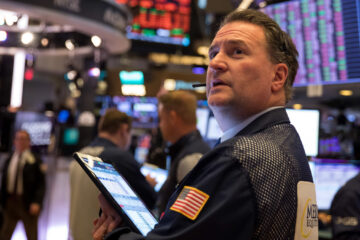The Russell 2,000 is a barometer for the financial performance of small U.S. companies.
leightrail from Getty Images Pro; Canva
What Is the Russell 2,000 Stock Market Index?
The Russell 2,000, also known as the “Russell 2K,” is a stock market index made up of small-cap companies. Analysts consider the Russell 2,000 to be a barometer for the financial performance of small U.S. companies.
These companies are by their nature very different from the companies that make up a “headline” index like the S&P 500, which tracks some of the country’s biggest names. While investors may not be as familiar with the companies in the Russell 2,000 as they are with those in the S&P 500, when viewed together, these indexes provide valuable insights on the overall health of the U.S. economy—at all levels.
How Is the Russell 2,000 Weighted?
The Russell 2,000 is a capitalization-weighted index, which means that each component is weighted by its market cap, or the total market value of outstanding shares. Other indexes, like the Dow Jones Industrial Average, are price-weighted indexes, which rank components based on share price. Many analysts believe that indexes weighted by market cap are more accurate reflections of the market segments they are tracking.
Which Companies Make Up the Russell 2,000?
The companies that make up the Russell 2,000 are small-cap companies. These companies have a market capitalization between $300 million to $2 billion. In order to be listed publicly, they have demonstrated strength in their annual revenues, cash flow, and public demand for their products.
To view a list of the latest additions to the Russell 2,000, check out the FTSE Russell website.
Who Manages the Russell 2,000 and How Are Its Indexes Structured?
The Russell 2,000 is managed by FTSE Russell Group, which tracks distinct segments of the stock market either by size, (ranging from large-cap to micro-cap), or by investment style (growth vs value, etc.). Its parent index is the Russell 3,000, which consists of the largest 3,000 publicly tradable stocks, or nearly every tradable equity available (97%) in the U.S. today.
All of the Russell subindexes “roll up” to the Russell 3,000. For example:
The Russell Top 50 Index tracks the 50 biggest companies within the Russell 3,000The Russell 1,000 Index measures 1,000 of the largest stocks within the Russell 3,000The Russell 2,000 Index tracks the 2,000 smallest companies within the Russell 3,000 index
The Russell 2,000 makes up 10% of the total stock market’s market capitalization while the Russell 1,000 makes up the other 90%. This really illustrates how a few companies can take up the lion’s share of market cap on Wall Street!
Can You Invest in the Russell 2,000?
Why did Russell categorize the market into so many distinct segments? One reason was to make it easy for investors to trade them. Since it is not possible to invest directly in a stock market index, mutual funds and ETFs have been designed to mirror the composites within the distinct Russell index segments in order to give investors exposure to these markets. It also serves as a benchmark for performance for mutual fund portfolio managers.
The ticker symbol for the Russell 2,000 is RUT, but since it is a stock market index, you cannot invest in shares directly. However, a few examples of mutual funds and ETFs which track this index are the Vanguard Russell 2,000 Fund (VRTIX) and the iShares Russell 2,000 ETF (IWM).
Is the Russell 2,000 Growth or Value?
The Russell 2,000 is a stock market index managed by FTSE Russell. In addition, FTSE Russell has introduced growth and value versions of this index, which are known as the Russell 2,000 Growth and the Russell 2,000 Value Indexes. These are categorized by price-to-book ratios and earnings forecasts, respectively.
When Does the Russell 2,000 Index Rebalance?
Every May, FTSE Russell rebalances its indexes and evaluates a list of global stocks for inclusion or deletion, using criteria such as size, company structure, and share type. The list is then ranked by market cap; the largest 3,000 get added to the Russell 3,000. The list is further refined by float-adjusted market cap, and “banded” into the Russell 1,000 and Russell 2,000 indexes.
These changes take effect every June. FTSE Russell also adds IPOs on a quarterly basis.
The Russell 2,000 vs the S&P 600
The Russell 2,000 is the most well-known small-cap market index. S&P Dow Jones Indices also manages an index of small-cap stocks; theirs is known as the S&P 600. Besides differing in the number of stocks each index tracks, the S&P 600 analyzes additional factors such as liquidity and public float as part of its ranking criteria, in addition to market capitalization.
When Was the Russell 2,000 Created?
The Russell 2,000 Index was created by the Frank Russell Company in 1984 and was the first benchmark index for small-cap stocks. A lot of additions and deletions have taken place since then, but today, the index celebrates more than 30 years of performance and is currently managed by FTSE Russell Group.
What Happens When a Stock Joins the Russell 2,000?
The phenomenon is known as the “Russell Effect.” When a company is added to the Russell 2,000, all of the mutual funds that are benchmarked to the index will automatically purchase it, which usually causes shares to skyrocket. Conversely, when a company is deleted, shares plummet. However, given the transparency of Russell’s methodologies, market analysts can usually predict which companies will be added and deleted, and so often the market factors in these expectations before the reconstitution takes place.
Why Invest in the Russell 2,000?
Investing in small-cap companies can be part of a diversified portfolio strategy; in fact, there is a term for it—the small-cap risk premium. While smaller companies experience greater volatility and wider price swings than more mature companies, they can also demonstrate exponentially greater growth. In fact, a seminal investment paper published in 1992 by Eugene Fama and Kenneth French explained how small-cap stocks outperform large-caps over time. One way to tap into the positive aspects of investing in the small-cap sector is through a mutual fund or ETF that tracks the Russell 2,000 Index, since it is composed of 2,000 companies, thus mitigating a lot of the risk that comes with investing directly in one low market-cap company.


